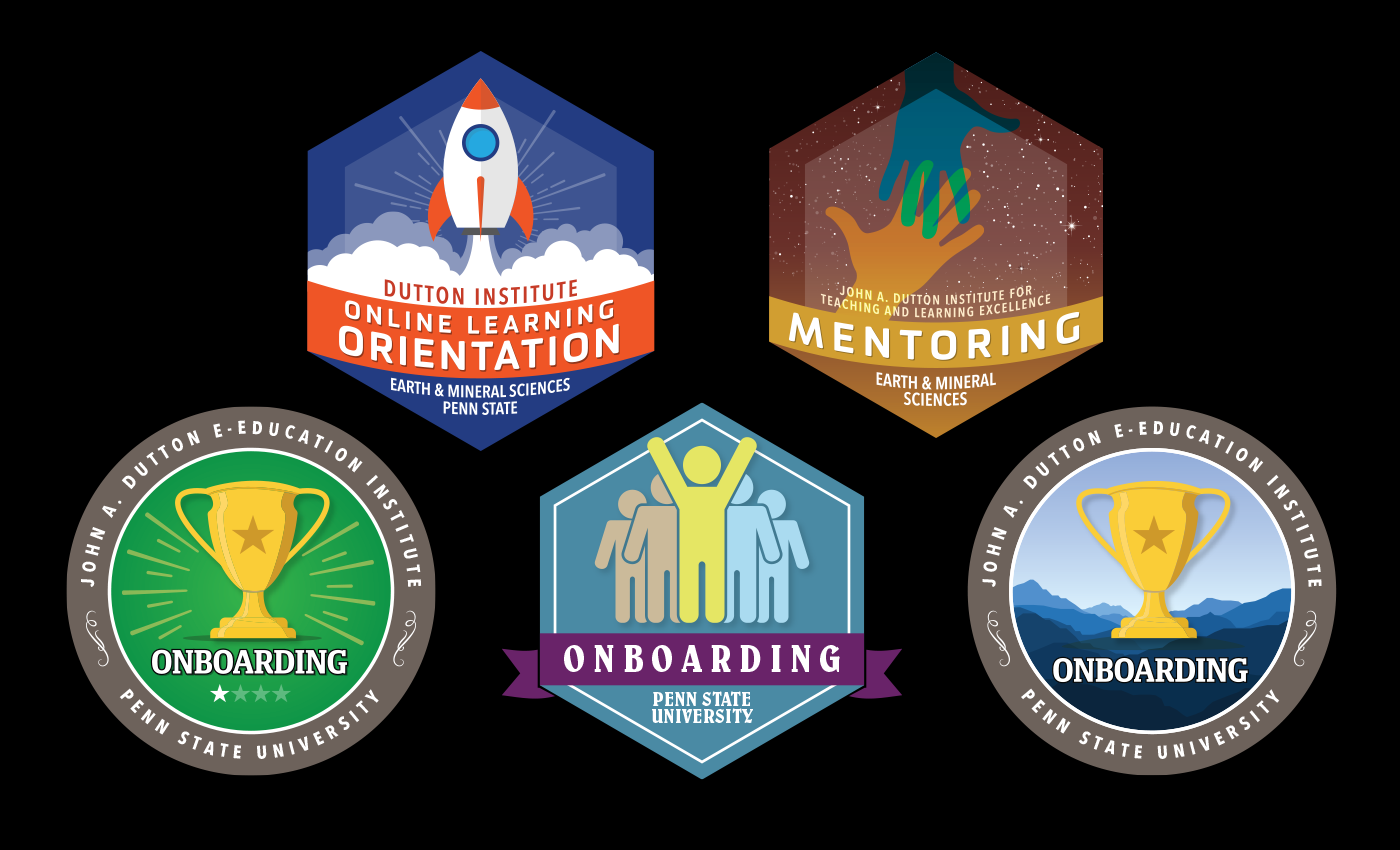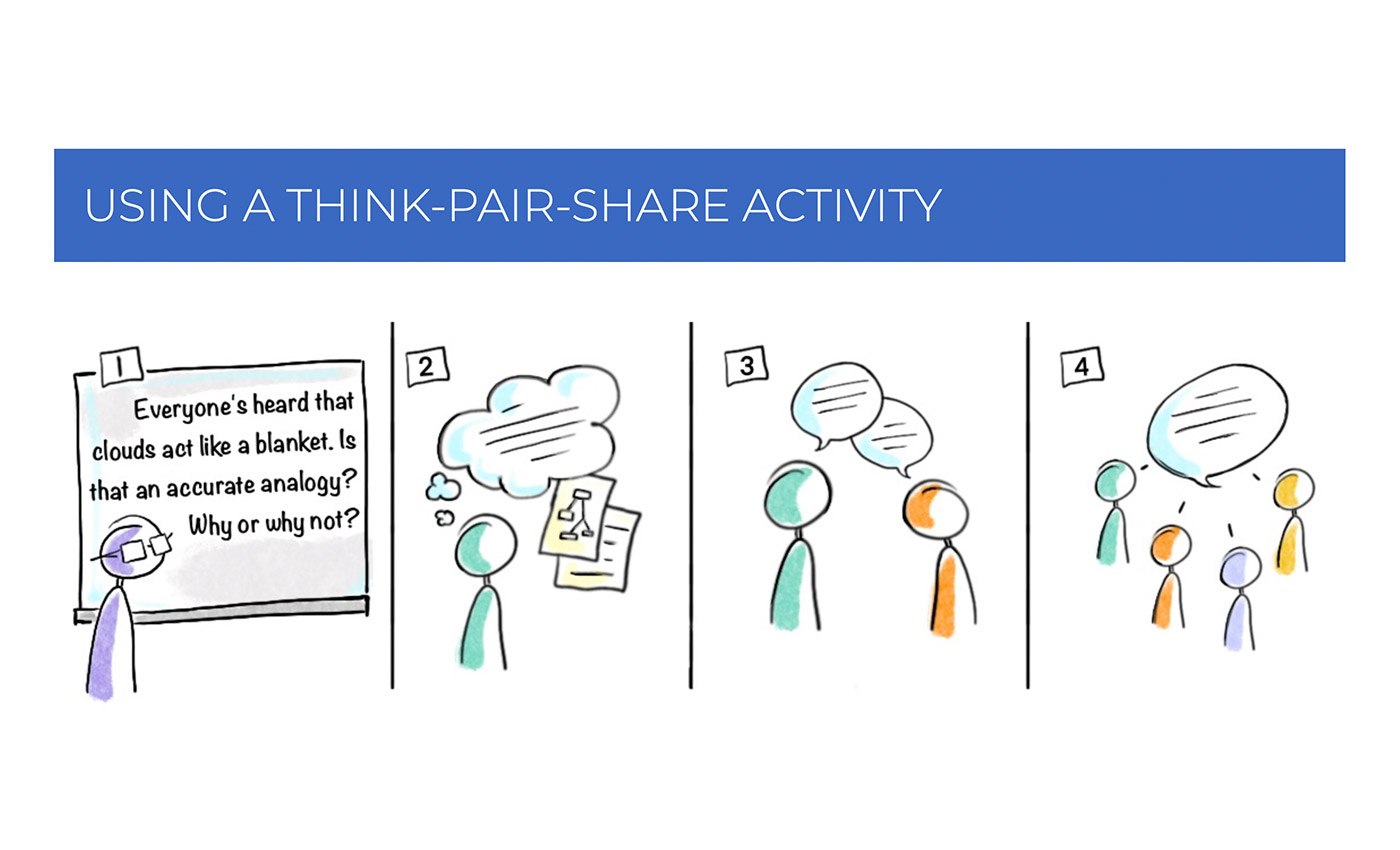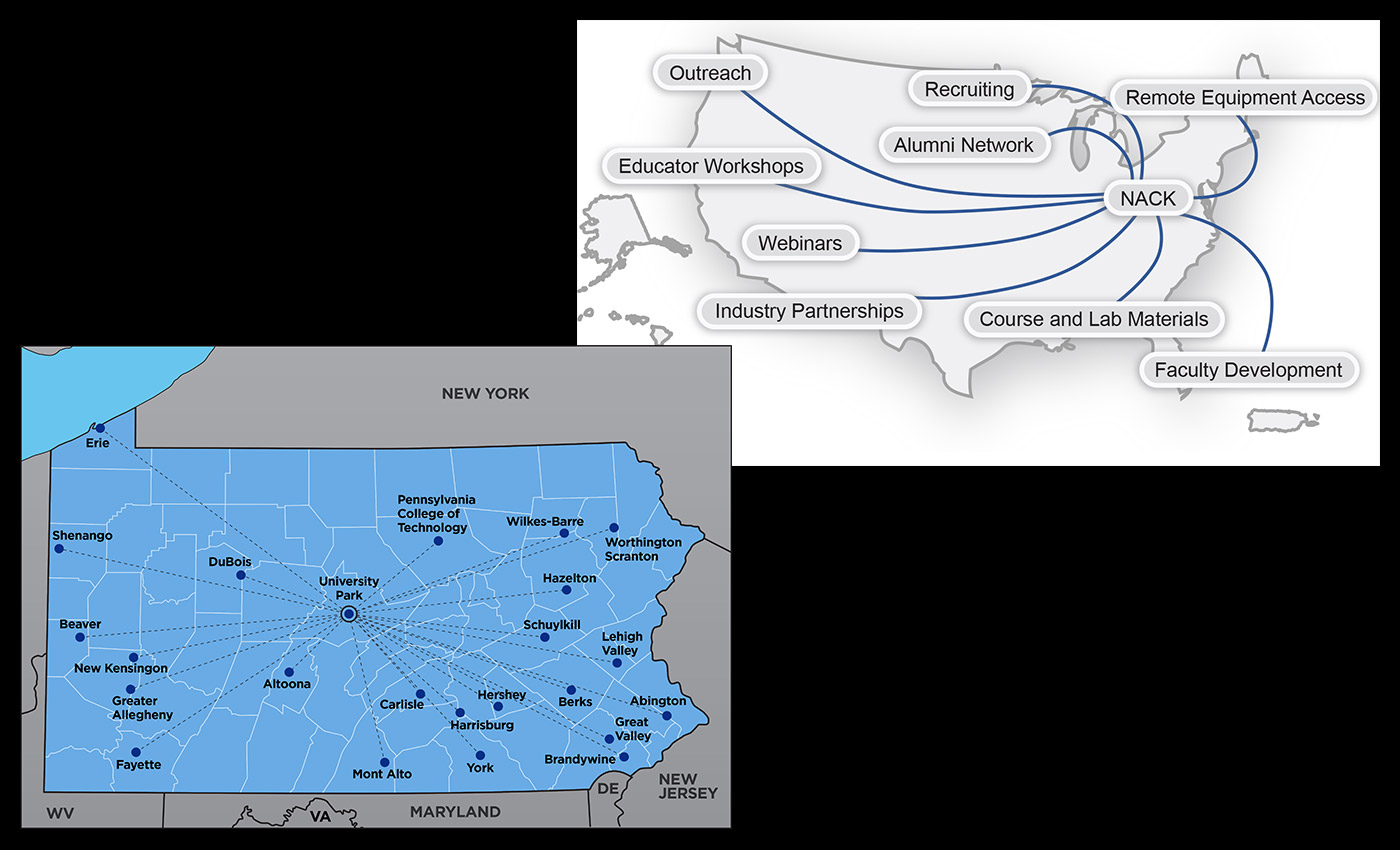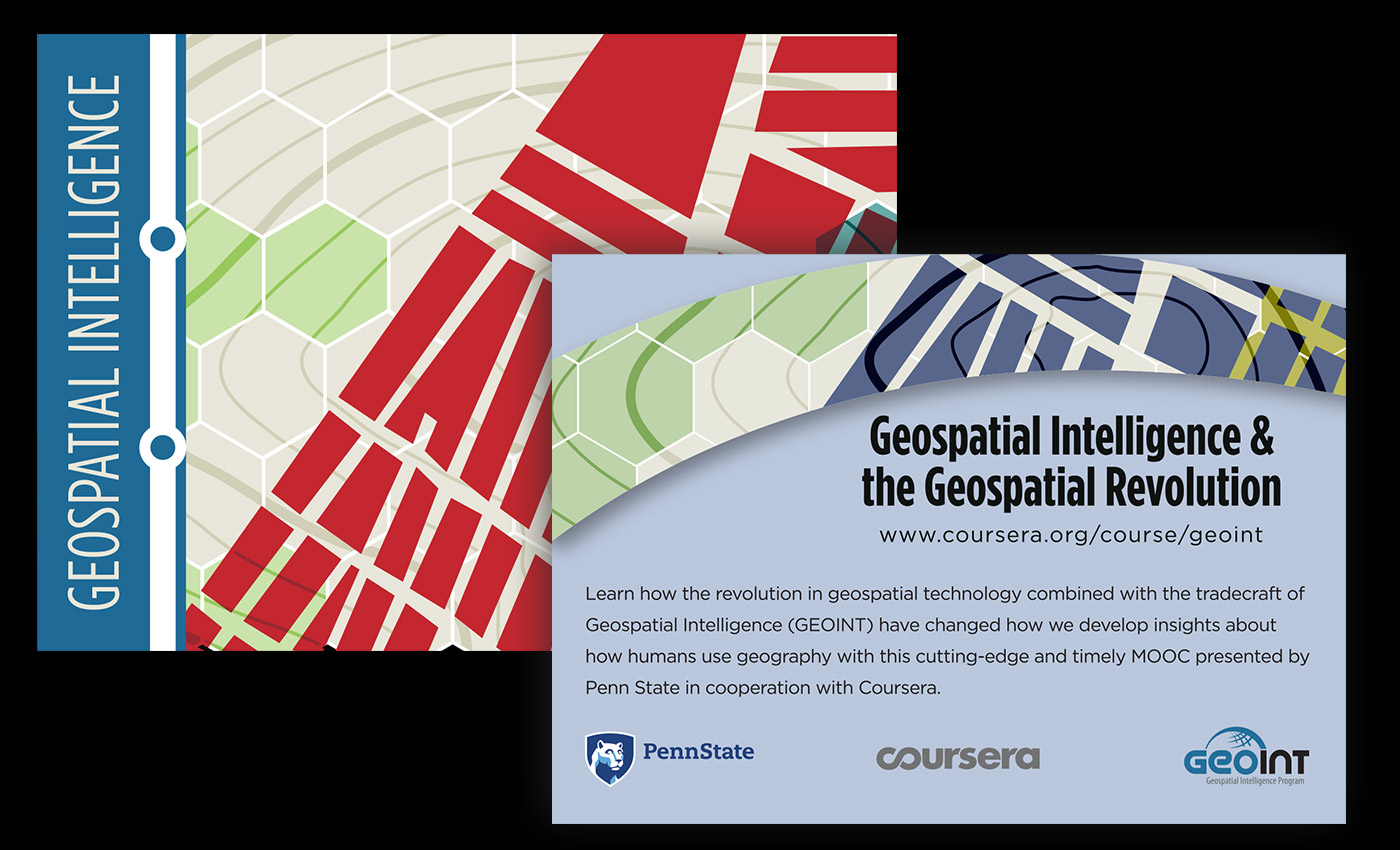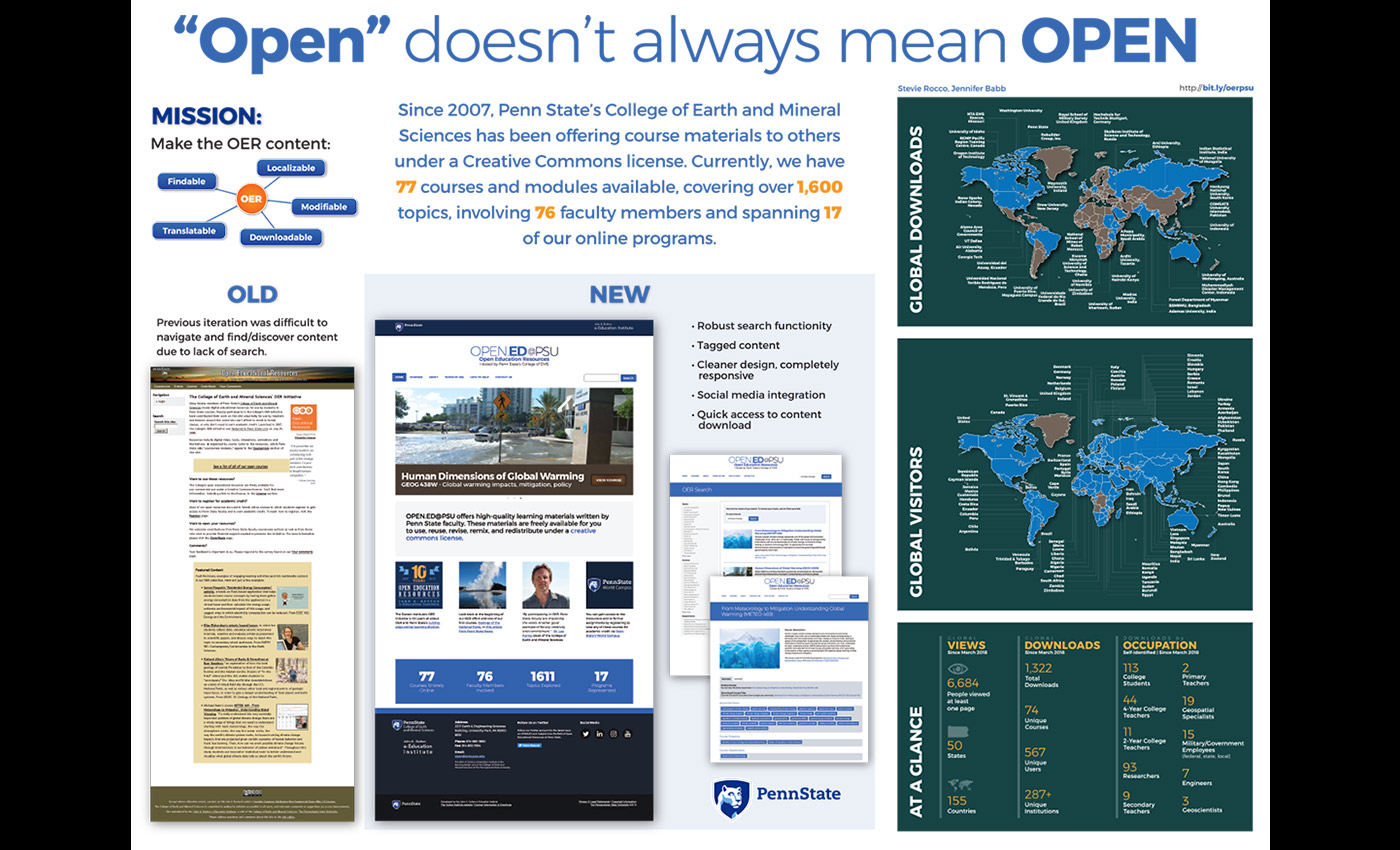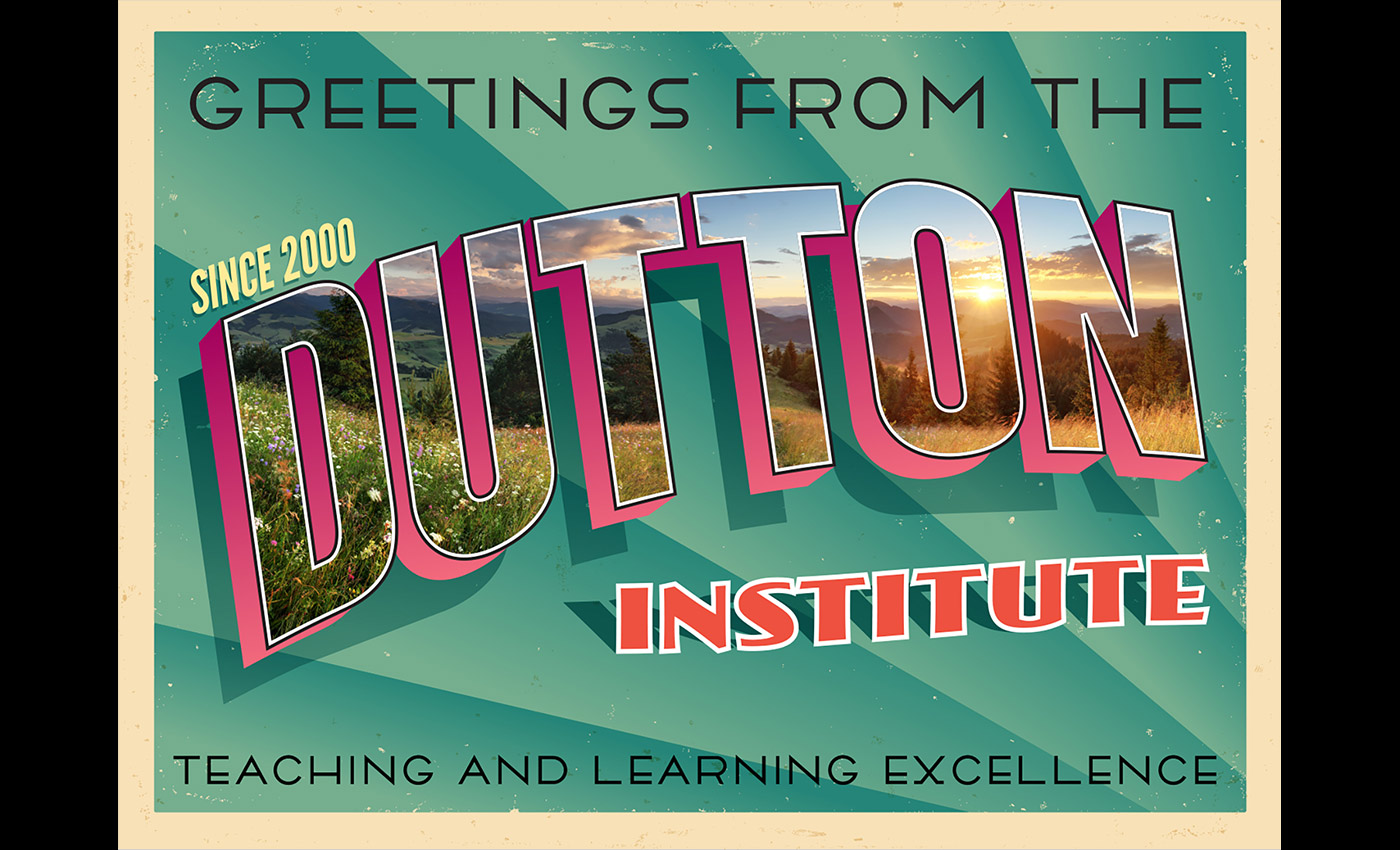Multimedia Services
While a picture may be worth a thousand words – that picture must be the right picture. The multimedia specialists at the Dutton Institute are an integral part of the Learning Design team, and together we craft audio, video, and graphic assets that help learners engage with your course content. Combining the best in technical and aesthetic know-how with sound pedagogy, our specialists make sure every minute your learners spend on video and imagery contributes to the learning experience.
Video Services
Video is a powerful medium that can pique our interest, highlight distinctive perspectives, and help illustrate new concepts and their relevance to our lives. It can connect us with people, helping us develop empathy as we experience personal stories from an ordinary day to an exceptional event. Video is also a crucial learning tool that we will demystify for you as we examine the ways in which it can impact your learning goals.
Recording quality videos is a multi-faceted process. Here are a few of the ways we can support you with that process.
- Video production in a studio
- Video production on location
- Video editing
- Audio capture and editing
- Creation of “Intros” and “Outros”
- Design of informative “lower third” banners
- Professional mentoring for filming your own videos
- Assistance with video hosting platforms
- Advice for hardware and software use
- And most important…creating pedagogically sound video content
[Music]
Introduce new people and places
David Yoxtheimer: On the ridges around me, there's actually been a fair amount of shale energy development that's occurred. I'm standing in a pipeline right of way. So beneath my feet, there's at least one gas line carrying gas away from the well pads that are up here on the mountain.
Interview
David Yoxtheimer: Who are the primary stakeholders in shale energy development?
Thomas Murphy: So, that could be politicians. That could be elected officials, we'll say, in a broader sort of a way, as well as community members that are being impacted, or are trying to manage the implications of shale development.
Brett Reinford: There's so much gas in here, so much pressure that I can, you know, I can jump up and down and you know, not sink too far down.
Narrator: Not all of the biomass that goes into a digester degrades into gas.
Narrator: Indoor urban agriculture can be done without any natural light.
Kyle Clement: So, here we have some butterhead lettuce. Almost full grown. This farm definitely fits a very specific market niche.
[Music]
Explain Concepts
Sridhar Anandakrishnan: It is that balance, that exchange, that really controls sea level. And that's why those of us who live in Pennsylvania might, and should, care about what happens to glaciers and ice sheets so far away.
Jenni L. Evans: So, what you see here are animations of, on the right-hand side, what happens when a hurricane's coming ashore and the ocean is responding to the very strong winds as that storm moves ashore. On the left, you can see what happens in terms of wind damage.
Narrator: The constant continuous wave, CW. So, we have a loop, instead of a linear cavity, we have a loop cavity.
Erica Smithwick: But you can also think of these other levels of issues that are more, let's say, in this case global. So, see here we have a system of interacting parts. We have a central issue and we see that it is multi-level or multi-scaler.
Demonstrate a technique or process
Narrator: Unwrap the pipette tips over the tubes and use the bulb to eject the enzyme mixture. Taking the bulb off the pipette tip to refill it with air will prevent sucking the mixture back up into the bulb.
Sarma V Pisupati : So, this problem actually deals with writing material balance equation. Assume that this is 100, then we can solve. We can solve everything here.
Narrator: Once you have your prices you can slide the inner card until the arrow on one side of the windows points to the price for that fuel.
Susan Trolier-McKinstry: What we're going to do is to orient those so that they all lie directly on top of each other. The easiest way to do this, is to take all of the bonds that hold the layers together, break all but one of them.
Introduce an instructor or a course
David DiBiase: Hello, this is David DiBiase here to talk to you about professionalism and Geographic Information Science and Technology. This course is an alternative to the required first course many students take when they start one of our certificate or degree programs. It's designed for students who come to us with a lot of experience in GIS.
Justine Blanford: How I got into GIS was really by chance. I grew up all over the world and really wanted to keep traveling and GIS allowed me to do that.
Greg Thomas: The course challenges students to think critically, consider alternative viewpoints, and question their own assumptions when analyzing why human events occur over place and time. I hope you enjoy studying the geographic foundations of geospatial intelligence.
[Music]
Help your students review material
Alan Kimmel: Instead of having a square, where each of the sides of the cell are equal, because they're all the length A, here I'm going to have a length A and a length B.
Narrator: This is an output of five, right. Because at five, to produce the fifth unit you incur a marginal cost of 35 dollars.
Seth Blumsack: So if we think about how the power injected by G1 gets to the load at Node 3, there are two possible paths. Some of the power injected at Node 1 [Music]
[Music]
Introduce new people and places
David Yoxtheimer: On the ridges around me, there's actually been a fair amount of shale energy development that's occurred. I'm standing in a pipeline right of way. So beneath my feet, there's at least one gas line carrying gas away from the well pads that are up here on the mountain.
Interview
David Yoxtheimer: Who are the primary stakeholders in shale energy development?
Thomas Murphy: So, that could be politicians. That could be elected officials, we'll say, in a broader sort of a way, as well as community members that are being impacted, or are trying to manage the implications of shale development.
Brett Reinford: There's so much gas in here, so much pressure that I can, you know, I can jump up and down and you know, not sink too far down.
Narrator: Not all of the biomass that goes into a digester degrades into gas.
Narrator: Indoor urban agriculture can be done without any natural light.
Kyle Clement: So, here we have some butterhead lettuce. Almost full grown. This farm definitely fits a very specific market niche.
[Music]
Explain Concepts
Sridhar Anandakrishnan: It is that balance, that exchange, that really controls sea level. And that's why those of us who live in Pennsylvania might, and should, care about what happens to glaciers and ice sheets so far away.
Jenni L. Evans: So, what you see here are animations of, on the right-hand side, what happens when a hurricane's coming ashore and the ocean is responding to the very strong winds as that storm moves ashore. On the left, you can see what happens in terms of wind damage.
Narrator: The constant continuous wave, CW. So, we have a loop, instead of a linear cavity, we have a loop cavity.
Erica Smithwick: But you can also think of these other levels of issues that are more, let's say, in this case global. So, see here we have a system of interacting parts. We have a central issue and we see that it is multi-level or multi-scaler.
Demonstrate a technique or process
Narrator: Unwrap the pipette tips over the tubes and use the bulb to eject the enzyme mixture. Taking the bulb off the pipette tip to refill it with air will prevent sucking the mixture back up into the bulb.
Sarma V Pisupati : So, this problem actually deals with writing material balance equation. Assume that this is 100, then we can solve. We can solve everything here.
Narrator: Once you have your prices you can slide the inner card until the arrow on one side of the windows points to the price for that fuel.
Susan Trolier-McKinstry: What we're going to do is to orient those so that they all lie directly on top of each other. The easiest way to do this, is to take all of the bonds that hold the layers together, break all but one of them.
Introduce an instructor or a course
David DiBiase: Hello, this is David DiBiase here to talk to you about professionalism and Geographic Information Science and Technology. This course is an alternative to the required first course many students take when they start one of our certificate or degree programs. It's designed for students who come to us with a lot of experience in GIS.
Justine Blanford: How I got into GIS was really by chance. I grew up all over the world and really wanted to keep traveling and GIS allowed me to do that.
Greg Thomas: The course challenges students to think critically, consider alternative viewpoints, and question their own assumptions when analyzing why human events occur over place and time. I hope you enjoy studying the geographic foundations of geospatial intelligence.
[Music]
Help your students review material
Alan Kimmel: Instead of having a square, where each of the sides of the cell are equal, because they're all the length A, here I'm going to have a length A and a length B.
Narrator: This is an output of five, right. Because at five, to produce the fifth unit you incur a marginal cost of 35 dollars.
Seth Blumsack: So if we think about how the power injected by G1 gets to the load at Node 3, there are two possible paths. Some of the power injected at Node 1 [Music]

Our Videography Services
The Dutton Institute’s videographer, Kay DiMarco, founder and manager of the EMS Faculty Studio, provides a complete one-stop-shop for all of your video needs. Here you can try the state-of-the-art “Lightboard” or get Kay’s expert advice on the best video techniques. Our Videography page has more details and examples.
Graphic Design & Web Services
Imagery plays a more powerful role in our lives than ever before. With mobile devices and constant innovation in technology, imagery is all around us. As just one example, it's estimated 147,000 photos are shared on Facebook alone - every minute! Today's learner, regardless of age, expects rich multimedia content because it’s their daily experience. This affords us a tremendous opportunity to impact the learning experience with powerful images and interactive content.
Here’s only a partial selection of the types of content we can partner with you to create:
- Photographic images
- Infographics
- Map design
- Before and after images
- Typographic-rich presentations
- Interactive charts and graphs
- Assistance with graphic creation
- Software and hardware expertise
- Animations
- Accessibility guidance
- Presentation design
- User interface and experience design
These are just a few design examples—every design need is unique and an opportunity to enhance the specific learning experience being created. We look forward to discussing your project and brainstorming possibilities together!
More Questions about Multimedia
Multimedia is a rich field full of opportunities. Let's talk about your project in detail and discuss potential options!

